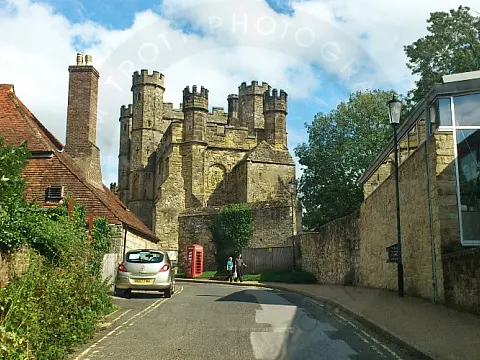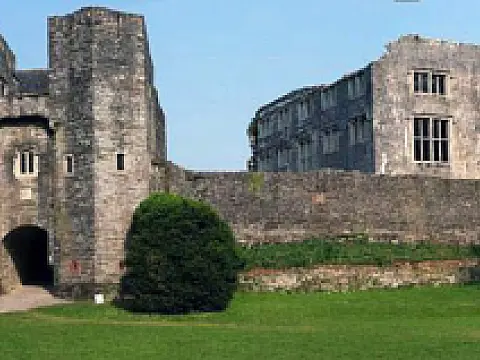Ghost Haunting and History of Hastings CastleHastings Castle was the first Norman castle constructed in England by William of Normandy after victory at the Battle of Hastings in 1066.
History of Hastings Castle
The original Hastings Castle was a wooden fort built in 1070. William of Normandy granted the town of Hastings to Robert, Count of Eu, who replaced it with a substantial stone castle. Inside Hastings Castle, he established the Collegiate Church of St Mary. The Counts of Eu held the castle for most of the Norman period and it became a place of great strategic importance. The castle stood guard over the port of Hastings which was the point of embarkation and disembarkation for those travelling between England and Normandy.
There was always the danger that Hastings Castle might fall into the hands of the French. It was this fear that led King John to order its dismantling in 1216. John died that same year, and his son Henry III, recognising its importance, ordered it to be rebuilt in 1220.
However, the French and the weather combined saw to it that the days of glory of this impressive fortress were short-lived - just how impressive Hastings Castle must have been can be gleaned from the ragged vestiges that still survive.
In 1287, violent storms that had been battering the south coast of England for several months finally caused parts of the sandstone cliffs on which the castle stood to collapse into the sea, taking the tower and large sections of the walls with them. The silting up of the harbour over the intervening years led to its decline in strategic importance, and Hastings became a fishing village instead of a port.
During the Hundred Years War (1337 - 1453) between England and France, the town was twice attacked by the French, while the erosion of the cliffs continued and more of the castle was lost to the sea. The final blow was dealt by Henry VIII during the Dissolution of the Monasteries when the Collegiate Church of St Mary inside the castle was dissolved.
Hastings Castle was abandoned and the site was sold to the Pelham family, who used it as farmland. Gradually, the once-mighty walls disappeared beneath a dense carpet of bracken, weed and other vegetation. By the early 1800s, it was little more than a distant memory.
In 1824, the fragmented remains were excavated, then repaired and rebuilt, and the site became a popular tourist attraction. Following bomb damage during World War II, the castle was sold to Hastings Council and today visitors from all over the world come to absorb its atmosphere and admire what remains.
Ghosts of Hastings Castle
Inevitably with a castle of this age and history, the spirits of those who lived here long ago have been known to cross the paths of modern-day visitors. Occasionally, the apparition of a woman in a brown hooded cloak has been seen on West Hill below the castle. According to some accounts, she carries a baby in her arms. She makes her way towards the south wall of the castle and, on reaching it, she and the baby simply vanish into the stonework. Some hold that she is the ghost of a Victorian girl who had an affair with a fisherman, who then abandoned her. Unable to bear the shame, she killed herself and her baby, and since then their ghosts have made periodic returns to relive the tragic event.













